Auctions
A Newly Rediscovered Artemisia Gentileschi Painting Comes to Auction—Along With Work by Three Other Women Old Masters
The auction also includes works by Fede Galizia, Orsola Maddalena Caccia, and Diana De Rosa.

The auction also includes works by Fede Galizia, Orsola Maddalena Caccia, and Diana De Rosa.

Sarah Cascone

A quartet of paintings by Italian female Old Masters—all newly rediscovered—are hitting the auction block at Dorotheum in Vienna.
Headlining the bunch at the May 3 “Old Master Paintings” sale is a work by Artemisia Gentileschi, painted with her studio assistant Onofrio Palumbo, which is expected to fetch €150,000 to €200,000 ($160,000 –220,000 ).
The last time the work, titled Abraham and the Three Angels, came to market, it was presented as a Bernardo Cavallino painting at Artemisia in Paris in 2014. It was bought in, according to the Artnet Price Database, but Dorotheum’s provenance records for the painting show it found a buyer through the auction house post-sale.
Cavallino is a significant name in his own right, with a $3.9 million sale at Sotheby’s New York in January breaking an auction record that had stood at $1.9 million for 34 years. But with a growing market interest in historical women artists, the reattribution of the canvas could spark new interest in the work.
“Artemisia is an artist who is much more in the consciousness of art historians at the moment,” Dorotheum specialist Mark MacDonnell told Artnet News.
“Her personal history was disturbing, let’s say, to 19th century taste,” he added, alluding to the artist’s rape by her art teacher and her subsequent torture at trial. “Therefore, her works were often given to male artists who were working in the same arena. Her authorship was somehow lost for political reasons. These were deliberate misattributions.”
It was the art historian Giuseppe Porzio who first proposed the new attribution, pointing to stylistic similarities to other known Gentileschi works, as well as a written record of payment to the artist in 1645 for a large painting featuring Abraham that is otherwise unaccounted for.
Close examination of the painting suggests the hand of not one but two artists, indicating it was a collaboration with Palumbo, one of her known studio assistants.
“He’s probably responsible for one of the angels and some of the background,” MacDonnell said. “This kind of two-handed composition done by two artists was common practice. We tend to attribute paintings to single artists, but often they’re working with collaborators.”
Gentileschi’s record was set at €4.8 million ($5.3 million) at Artcurial in 2019. (The painting, Lucretia, was acquired by the Getty Museum in Los Angeles.) The first of the artist’s eight million-dollar plus auction sales came in 2014, with seven since since 2017 including one at Dorotheum.
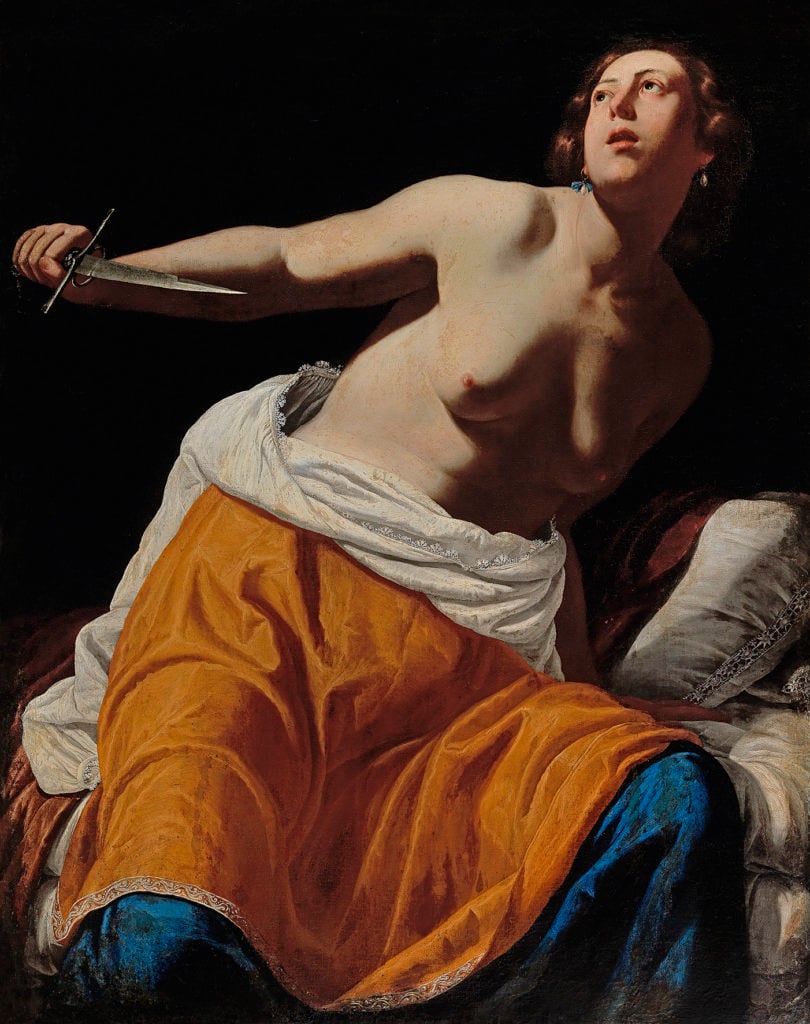
Artemisia Gentileschi, Lucretia. Courtesy of Dorotheum.
Nevertheless, the auction house seems to have erred on the side of cautious estimates for its upcoming sale of women Old Masters.
The Milanese Renaissance artist Fede Galizia, for instance, set an auction record of $2.4 million for her still life A Glass Compote With Peaches, Jasmine Flowers, Quinces, and a Grasshopper, which sold in 2019 at Sotheby’s New York.
Dorotheum has set expectations lower, at just €200,000 to €300,000 ($220,000–330,000), for her Judith With the Head of Holofernes, even though the previously unpublished painting is signed—a rarity for a female artist of the period.
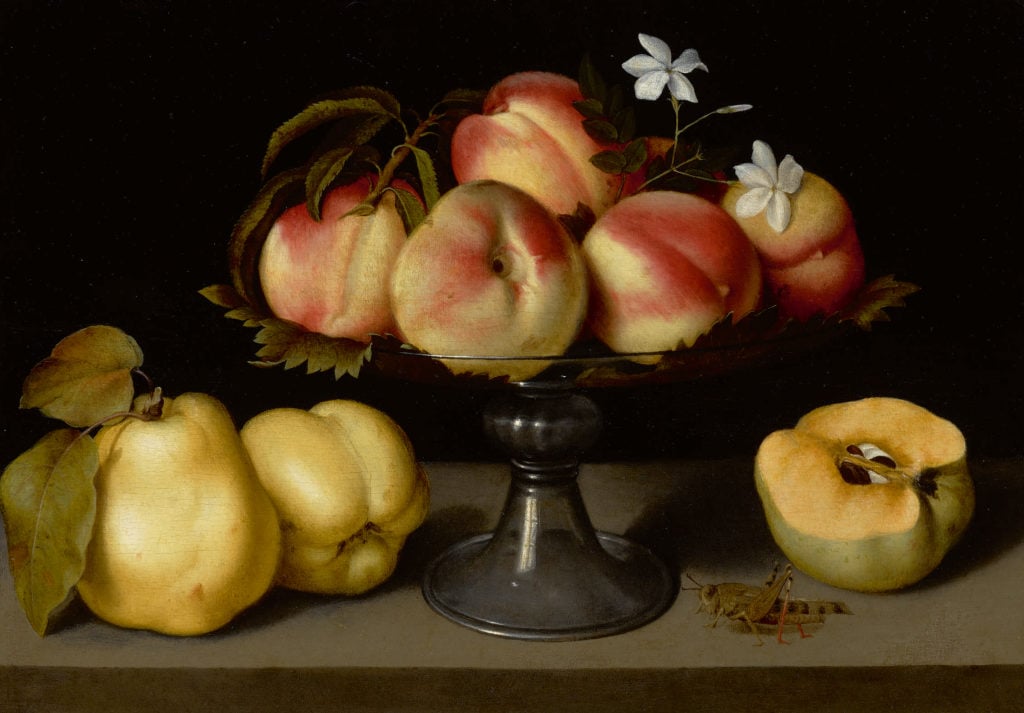
Fede Galizia’s Glass Compote with Peaches, Jasmine Flowers, Quinces, and Grasshopper. Courtesy Sotheby’s.
One factor the auction house took into account is that Galizia is better known for her still-life works than her portraits or religious scenes. (Although another Judith and Holofernes painting by the artist is in the collection of the Ringling Museum of Art in Sarasota.)
“There was nothing comparable on the market, so it’s a very cautious estimate,” MacDonnell said. “It’s in amazing condition. It comes from a collection where it hasn’t been seen for many years, and it was unpublished. And the fact that it’s signed is really quite unusual. So it’s got all the ingredients to create interest at auction.”
He likened Galizia’s take on the well-known subject to paintings of the story by Gentileschi in that both artists cast Judith as the protagonist, rather than centering the composition on Holofernes.
“It’s definitely about her, about the heroism, the strength of the woman,” MacDonnell said. “It could be argued that this is a very female interpretation of the subject.”
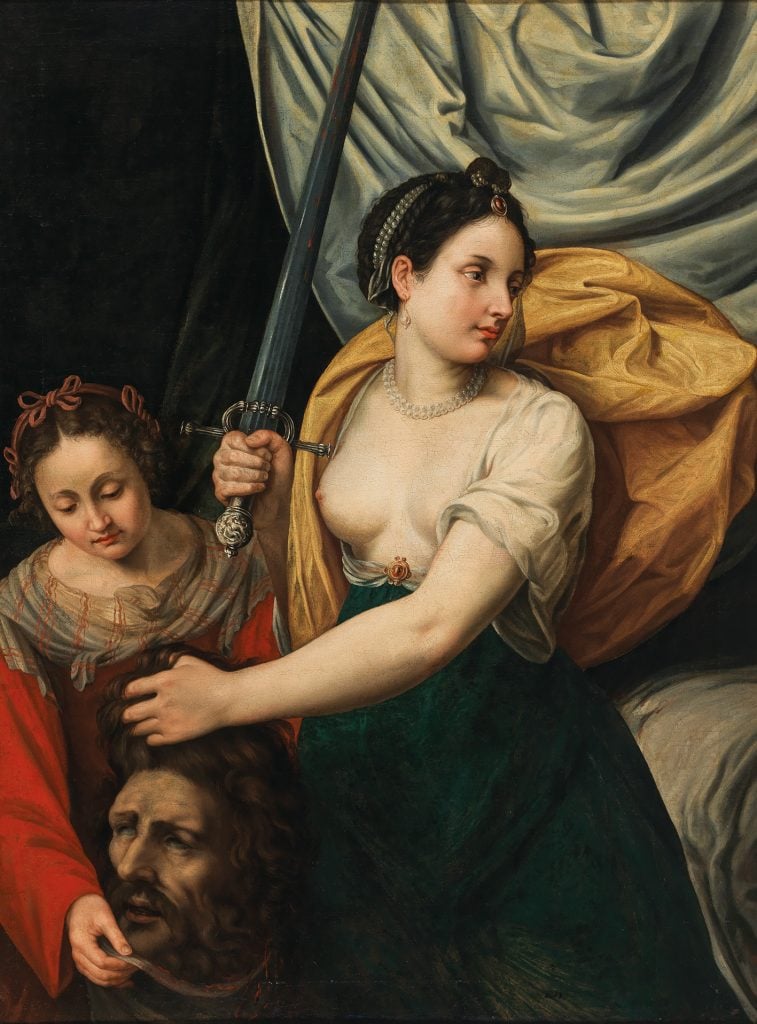
Fede Galizia, Judith With the Head of Holofernes. Courtesy of Dorotheum.
Another religious composition by a female artist better known for her still life in the sale is Saint Catherine of Alexandria by the Mannerist painter Orsola Maddalena Caccia. Trained by their father, Guglielmo “il Moncalvo” Caccia, Orsola and her sister became nuns, setting up a successful studio at their convent.
The artist made a splash at auction in 2020, when her Still life of birds, including a marsh tit, chiffchaff, chaffinch, blue tits, goldrest, lapwing and a great tit sold for more than 1,300 percent above its high estimate at Sotheby’s London, setting her auction record at £212,500 ($262,378). (The Metropolitan Museum of Art in New York also recently acquired a pair of her paintings.)
A low estimate for the upcoming Dorotheum sale could yield similar fireworks: The work, newly added to Caccia’s oeuvre thanks to art historian Alberto Cottino, is expected to sell for just €20,000 to €30,000 ($22,000–33,000 ).
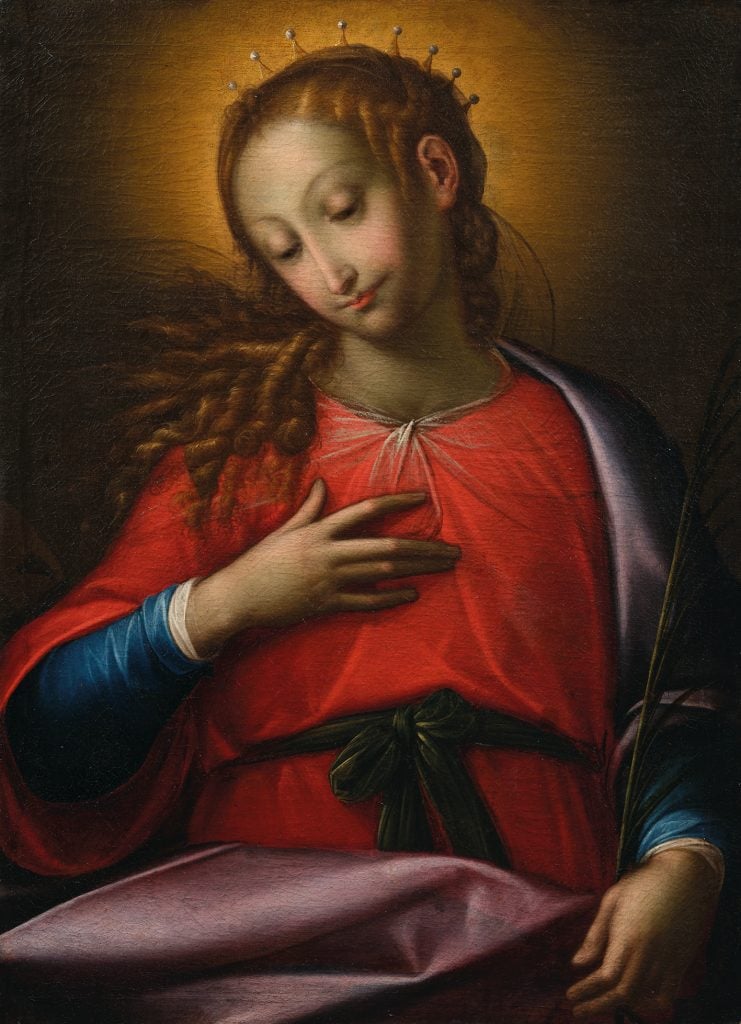
Orsola Maddalena Caccia, Saint Catherine of Alexandria. Courtesy of Dorotheum.
The fourth female Old Master included in the auction is perhaps the least well known, the 17th-century Neapolitan painter Diana De Rosa, also known as Annella di Massimo. The artist has only had seven works come up at auction, according to the Artnet Price Database, and all at Dorotheum within the past five years.
Many of those painting were previously attributed to Giovan Francesco “Pacecco” De Rosa, who was most likely her brother. Based on stylistic similarities to known paintings by the artist, art historian Riccardo Lattuada has been working to expand de Rosa’s corpus.
The Saint Cecilia painting in the upcoming sale was previously identified only as the work of a “Neapolitan Master 17th century” when included in a 2000 exhibition at the Palazzo Barberini in Rome.
“When these paintings are rediscovered, sometimes they’re hiding in plain sight and they’ve just been misattributed,” MacDonnell said, adding that, like Gentileschi, De Rosa may have fallen out of favor for reasons unrelated to her talent.
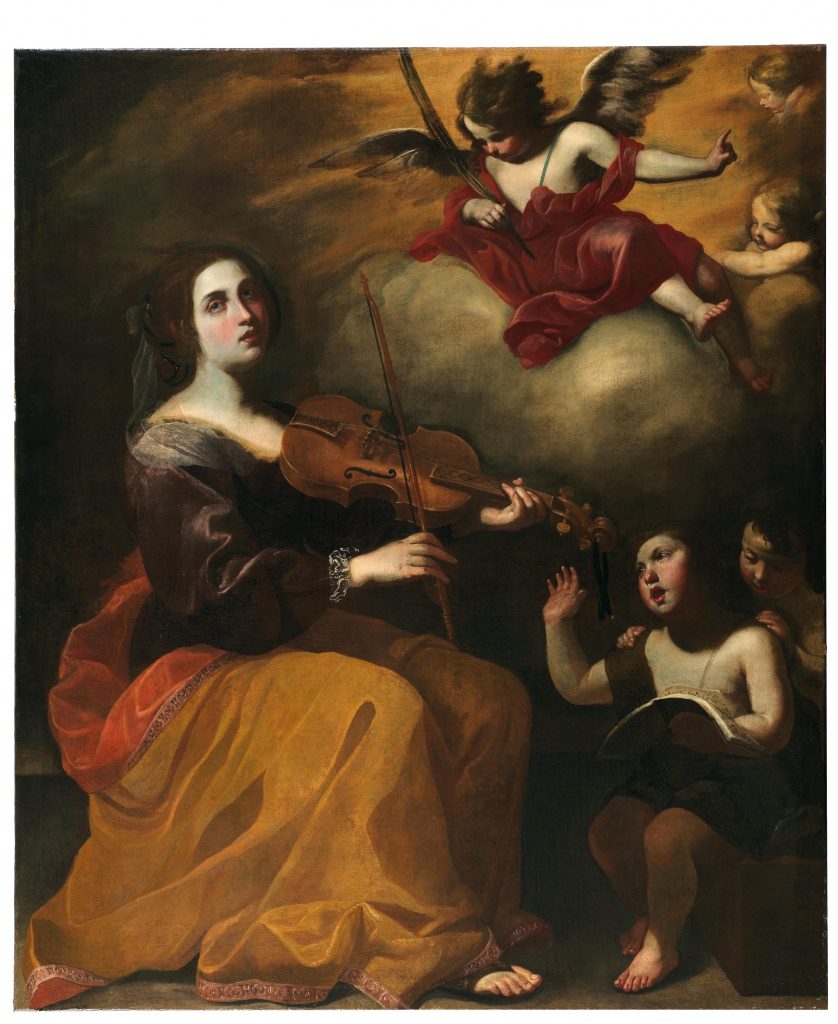
Diana De Rosa, called Annella di Massimo, Saint Cecilia. Courtesy of Dorotheum.
“Diana De Rosa is documented as having a dramatic personal history,” he explained. “There are some sources that say she was murdered by her husband. We’re not sure if that is fact or just romantic fiction. But she was certainly unusual in the fact that she was a successful woman painter in that period.”
Dorotheum has put the presale estimate on Saint Cecilia at €30,000 to €40,000 ($33,000–44,000)—but De Rosa’s work has previously sold for as much as €165,500 ($190,646), reflecting the growing demand for work by even previously obscure women Old Masters.
“Any work from a 17th-century female painter is of interest, just because they’re so rare. And these kind of paintings are increasingly more and more significant, in part due to issues of gender representation,” MacDonnell said. “Public collections are interested in purchasing these works just to correct imbalances within their collections.”